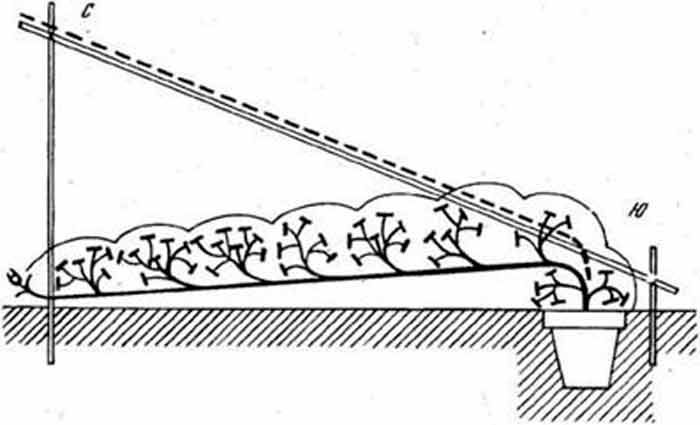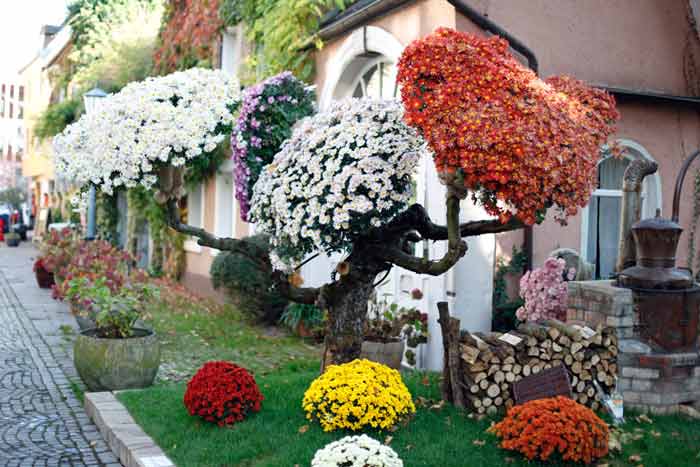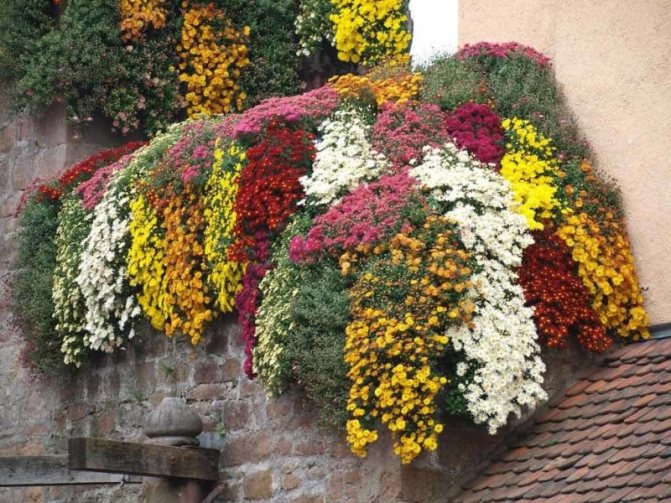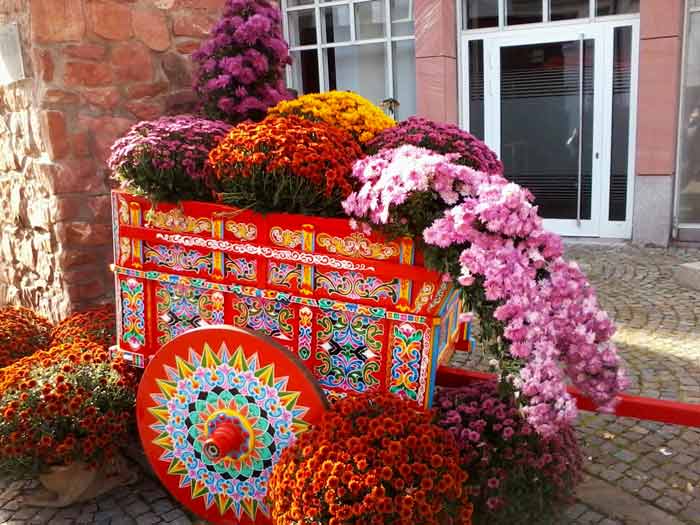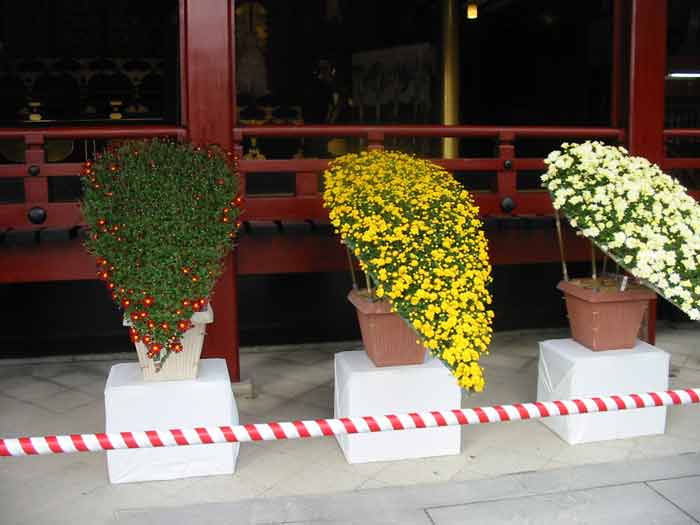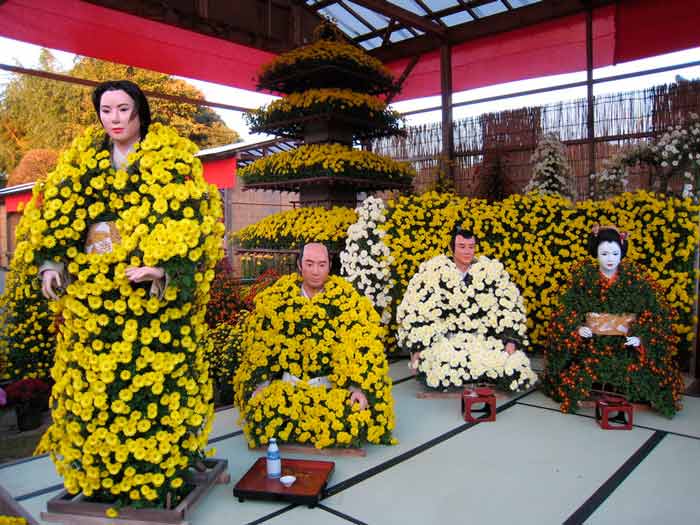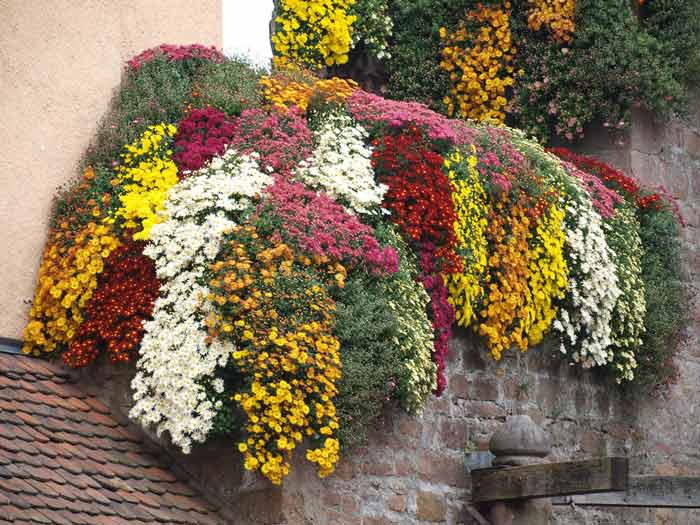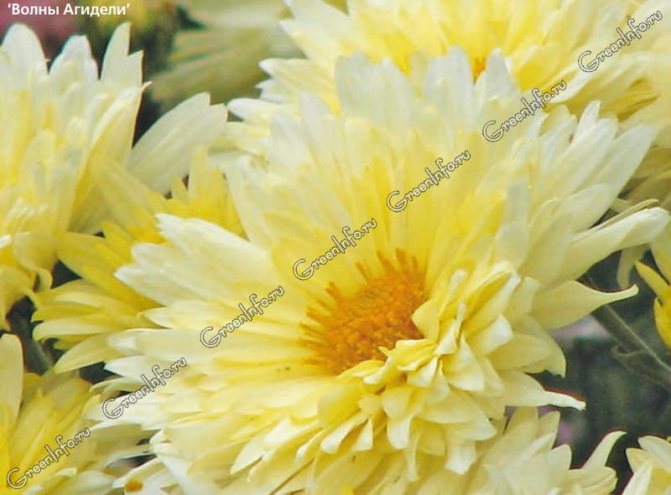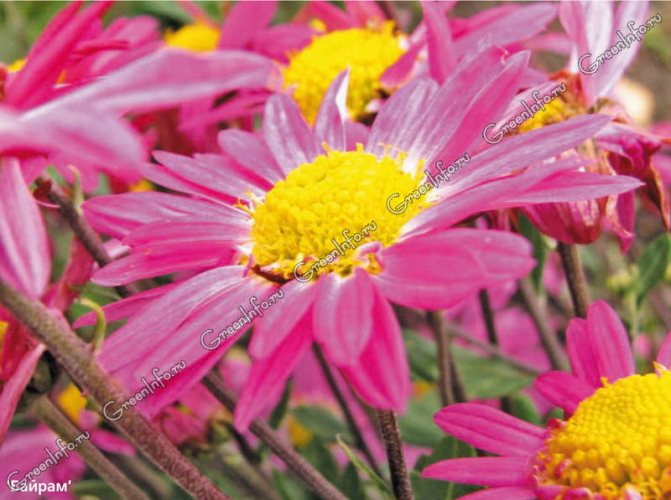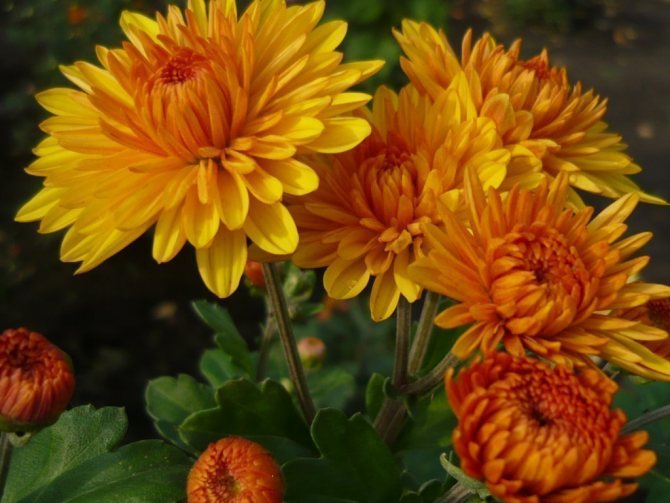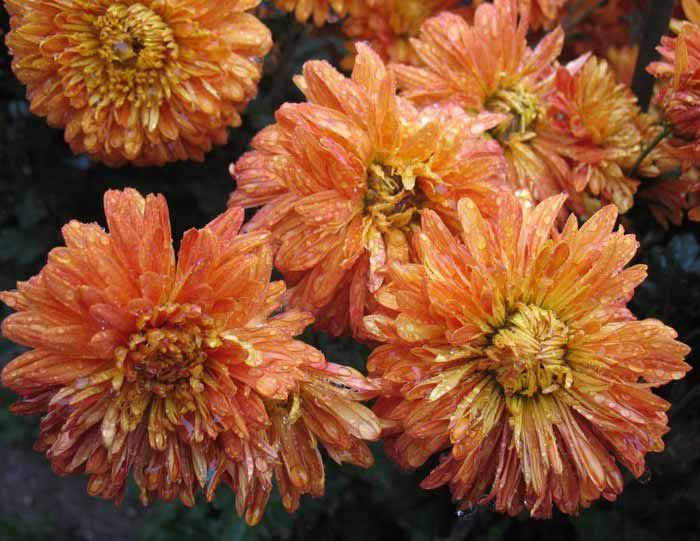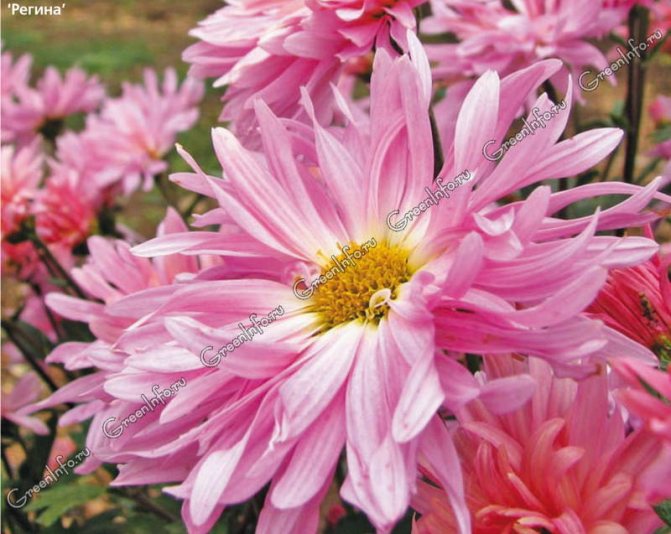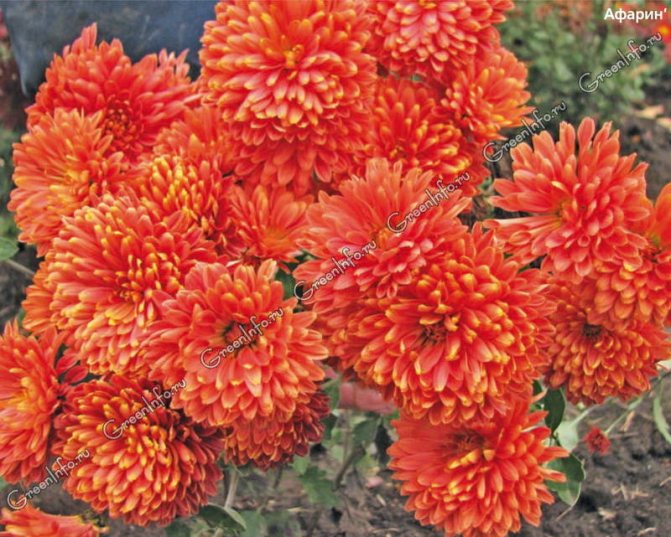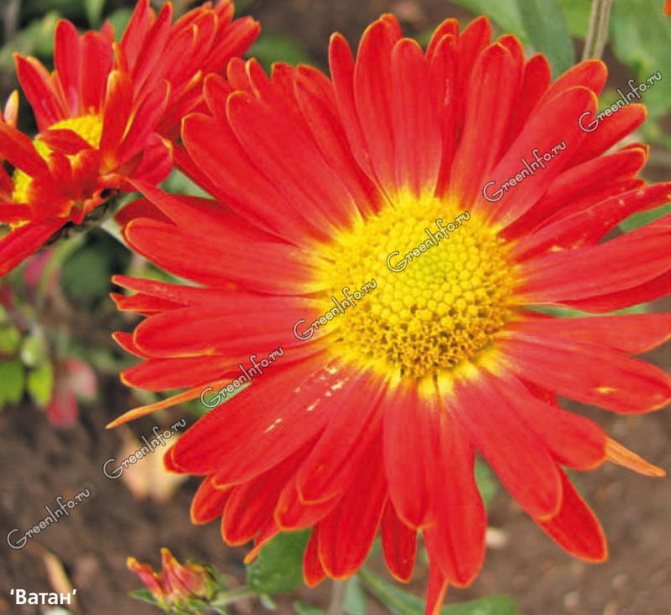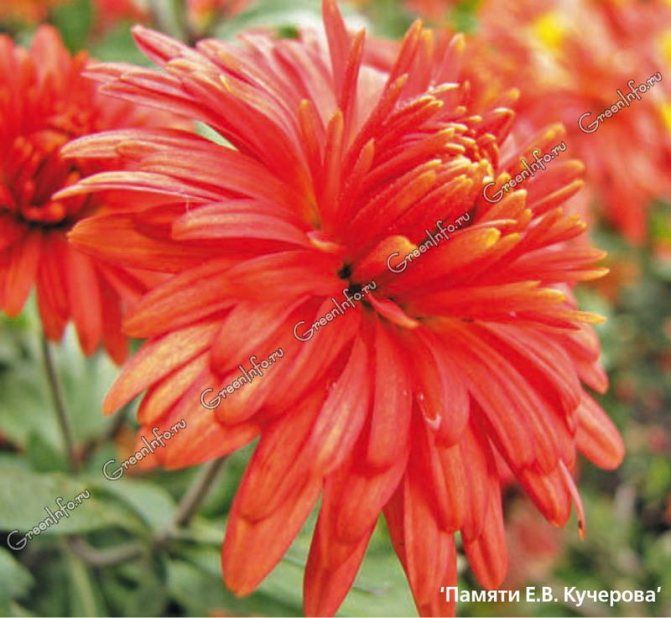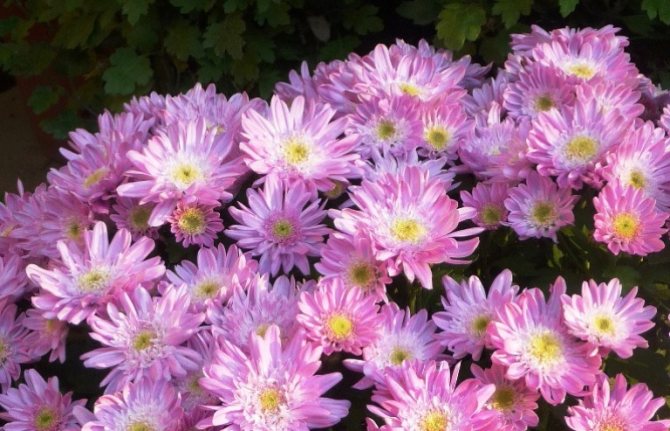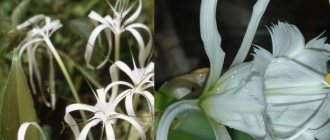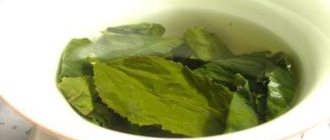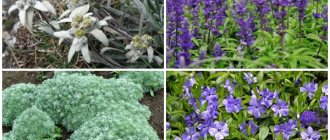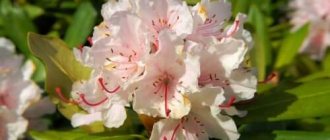- Chrysanthemum classification
- Korean chrysanthemum varieties
- White chrysanthemums
- Apple blossom
- Altgold
- Sun
- Lelia
- Amber
- Purple Haze
- Growing
- Care
- Preparing for winter
- Reproduction
Russian gardeners strive for the flowers on their site to delight with their beautiful appearance for as long as possible. In pursuit of beauty, they massively plant chrysanthemums, considering them to be universal plants that can withstand Russian climatic conditions. But only winter-hardy varieties of chrysanthemums that are suitable for a particular place can be planted in the gardens of the Ural and northern regions. Planting is not limited to - chrysanthemums require full and proper care.
Chrysanthemum Apple blossom
Characteristics and features of Korean chrysanthemums
Korean chrysanthemums (Ch. X koreanum Makai) are also often called oaks, as their thick leaves resemble oak in shape. In some varieties, they have a delicate aroma, while in others they have a pungent smell, like wormwood.
Korean chrysanthemums have been known for over a hundred years. They appeared due to the crossing of the Siberian chrysanthemum, originating from Korea, and the cultivar Ruth Hatton.
Distinctive features of these plants are:
- small size of flowers;
- the ability to bloom with a long summer day;
- the possibility of growing in the open field;
- flowering duration - up to four months;
- the ability to withstand low temperatures (about zero degrees).
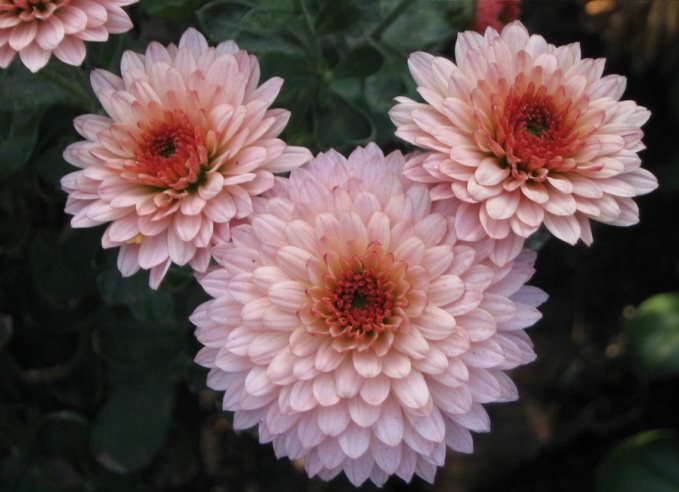
Korean chrysanthemums compare favorably with large-flowered varieties in their ability to endure cold winters in the open field. For this, of course, they need to be carefully covered. But still, they do not need annual transplants.
Numerous hybrid varieties of these chrysanthemums are plants ranging in height from 25 to 80 cm. The diameter of their flowers, collected in lush bouquets, ranges from 5 to 10 cm. The bushes are literally strewn with flowers, often combining several shades and colors harmoniously passing into one another.
Popular varieties
Different varieties of Korean chrysanthemums differ in terms of flowering time. In many regions of Russia, only early and medium varieties that appear in summer and autumn have time to fully bloom. Late ones, blooming in November-December, have to be cut off. After all, at zero degrees, their buds die. Of the first two categories, the most famous varieties are: Isabel, Syaivo, Malchish-Kibalchish, Evening Lights, Koreanochka, Cherry, Zolotinka, Lellia and others.
A description of the varieties of chrysanthemums, divided by the height of the bushes, is given in the table.
| Groups | Varieties | Bloom | Height and diameter of the bush (cm) | Flower diameter (cm) | Inflorescence type | Flower color |
| First (curb) | Malchish-Kibalchish | from the end of July 30-35 days | 28/60 | 7,0 | non-double (chamomile) | lilac pink |
| Mascot | from late July to frost | 25 | 5,0 | semi-double | raspberry-beetroot | |
| Second (medium-sized) | First snow | End of August 30-40 days | 35/51 | 5,0 | semi-double | white |
| Evening lights | End of August 30-40 days | 35/35 | 5,5 | non-double (chamomile) | red-yellow | |
| Third (tall) | Hebe | Mid october | 60/50 | 5,0-6,0 | reed tubular | lilac pink |
| Orange sunset | September-November | 75-40 | 10,0 | terry | yellow brownish red |
Planting methods
There are three main ways to plant chrysanthemums:
- seeds,
- cuttings,
- dividing the bush.
Seeds
Seeds for seedlings are grown in peat pots starting in February. And in May they can be planted in the ground. This breeding method is not very common, because such plants do not inherit the parental traits. There is a great risk of not achieving the desired result.
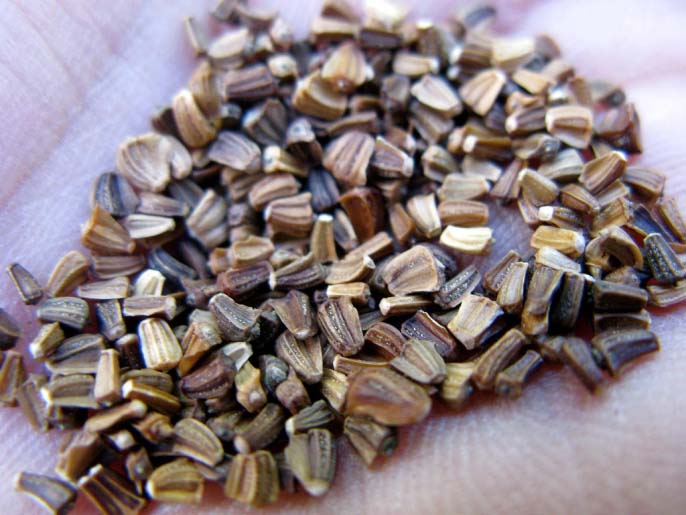

Planting by cuttings
Seedlings for planting by cuttings are best purchased in August. Then the bushes in the fall can be planted on the site. Before wintering, the flowers from the bush are cut off and covered with spruce branches. But it is best to plant seedlings in the spring.
Cuttings together with a lump of earth are planted in the ground in May-June. At the same time, humus mixed with earth is first poured into the dug holes up to 40 cm deep. Then a small depression is made, 2 cm larger than the earthen coma, where the plant is lowered. In this case, the root collar should not be deep in the ground, otherwise it will rot.
Bushes of tall varieties of chrysanthemums need support. For each plant, a plot of 30 by 30 cm is provided, and for varieties with spreading bushes - 40 by 40 cm. After planting, be sure to remove the growth point. A newly planted plant is shielded from the bright sun for a couple of days.


Dividing the bush
Once every three years, before wintering, you need to dig up the plant so that it does not degenerate. In this case, the root is divided into 3-4 parts, which are planted in a new area. Hilling of plants serves as protection against frost a ten-centimeter layer of peat mixed with sand, covering them with spruce branches. But even if in winter the main root freezes out, then in the spring (albeit with some delay) new shoots will appear from the adventitious buds.
Description and classification of varieties
Today there are about half a thousand different varieties and hybrids of the plant. Sometimes they are so different from each other that only a specialist can figure it out. Despite this diversity, botany has not yet officially recognized the Korean chrysanthemum as an independent species. And yet the flowers have common characteristics by which one can classify their belonging to the group of "Koreans":
- all plants are perennial;
- they are resistant to cold weather and even withstand the test of the first snow;
- recommended for planting in unprotected ground.
Attention! It is believed that chrysanthemums of this variety are small-flowered. But there are specimens with large flowers.
For the rest of the characteristics and a more detailed description of Korean chrysanthemums, they differ from each other. For example, depending on the height of the bush, they distinguish low-growing varieties (up to 45 cm), medium (45-55 cm) and high (from 55 cm). Compact plants are planted along curbs and grown in pots on a windowsill. Medium and tall ones will decorate the flower beds both in group plantings and in solo performance. Another criterion for dividing Korean chrysanthemums is the type of inflorescences. There are simple, double and semi-double crops, the petals of which are painted in a wide variety of colors.
Growing features
Three factors are important for growing Korean chrysanthemums:
- abundance of light
- a fairly spacious area (flowers become smaller in cramped conditions),
- moderate amount of moisture.
It is better to plant them on a hillock or in a high flower bed, where they will be well lit, protected from drafts, but accessible to a light breeze. And underground waters in these places are not afraid of them.
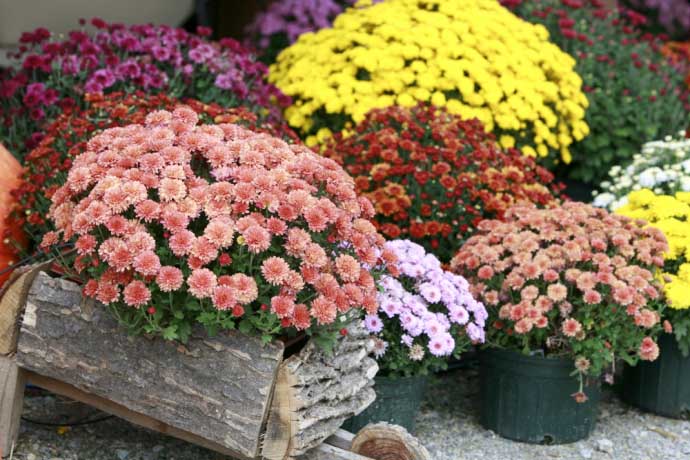

These plants prefer loose, slightly acidic soil. Loam is best suited for them. The land must be fertilized first. For this purpose, three-year-old compost and dry mullein are used. At the same time, it is important to observe the measure so that the overgrown stem and leaves do not drown out the flowers.
Stagnant moisture in the soil can be detrimental to plants. It is especially terrible for them during the wintering period. Therefore, the soil in the area intended for chrysanthemums is pre-mixed with sand to improve drainage.
Care rules
Growing Korean chrysanthemums is quite simple, but troublesome. Caring for them includes several important components.
Top dressing
In autumn, the site is filled with leaf humus and phosphorus fertilizers (superphosphate). At the time of the growth of the bush, nitrogen fertilizers (urea, ammonium nitrate) are used. And during the budding period (June), flowers need potash (sulfuric acid potassium) and phosphorus fertilizers, if the latter were not applied in the fall.


Watering features
The first watering is carried out at planting. To prevent the water from spreading in vain, a hole is formed around the bush. The plant needs to be watered 3-4 times a week so that moisture gets only under the root.
Protection against diseases and pests
Chrysanthemums often suffer from fungal diseases - various spots, rot, rust fungi. This happens due to a violation of agricultural technology when growing flowers (excess moisture, impermeable soil, low temperatures, etc.).
The most dangerous pests for chrysanthemums are nematodes. Plants affected by them have to be destroyed. Aphids also like to settle on chrysanthemums, but they are effectively combated with the help of special preparations (actar, phytover, agraverine).
We also recommend that you read the article, which tells you how to create a flower clock with your own hands.
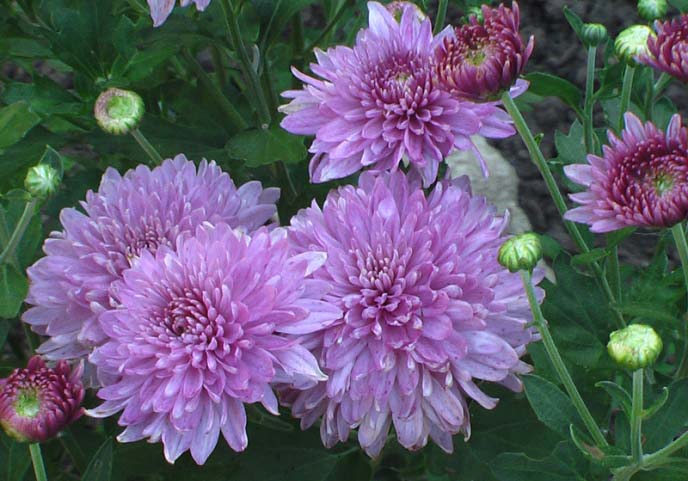

CHRYSANTHEMES. DISEASES. PESTS.
Chrysanthemum diseases mainly associated with errors of care: insufficient watering or too high temperature of the air in which the plant is contained. Of the pests, chrysanthemums are affected by aphids and spider mites. To destroy aphids, the plant is washed with soapy water. The treatment must be repeated every 7-10 days.
Good results are obtained by treating plants with pyrethrum. The solution is prepared as follows: 200 gr. Pyrethrum powder is infused in 10 liters of water for 12 hours, then 50 ml is taken. infusion, diluted in 10 liters of water and add 50 gr. soap.
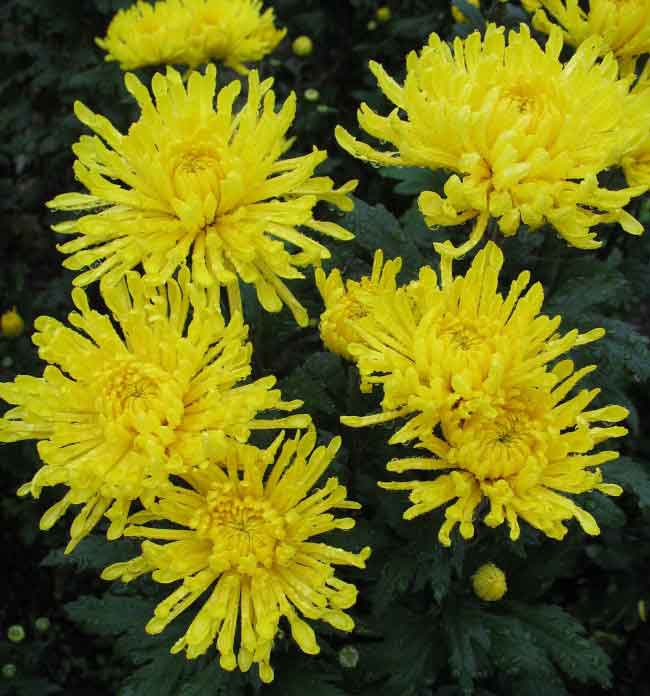

The water extract of garlic is very effective in the fight against aphids, spider mites and other pests. Take 50 gr. crush garlic in a mortar and pour a glass of cold water. After 15-20 minutes, strain the mass and dilute with water, bringing the volume to 1 liter. You need to take 1.5 cups of this solution per bucket of water and wash the plants in the evening or in cloudy weather. You can treat the plant with an insecticide.
Korean chrysanthemum in landscape design
This beautiful flower is widely used for decorative purposes, ideal for a flower garden. Possible options are:
- Chrysanthemum leaves are one of the first to appear in the garden; they look favorably next to conifers.
- Regular flower beds of various shapes. They can be divided with flowers of different colors into geometric shapes, segments, and even flower pictures can be created from them.
- Decoration of verandas and main staircases, where it is good to play with contrasting color transitions.
- In the borders, you can plant one-color plants or dilute some colors with others.
Chrysanthemums go well with other plants:
- blue sage and yellow-bronze chrysanthemums;
- pink and red salvias with red chrysanthemums;
- orange peppers and white chrysanthemums;
- decorative miscanthus with green leaves and bronze panicles next to chrysanthemums of contrasting color;
- coleus, marigolds, kosmeya, like chrysanthemums, love the sun and bloom until late autumn.
What are the cascades of chrysanthemums
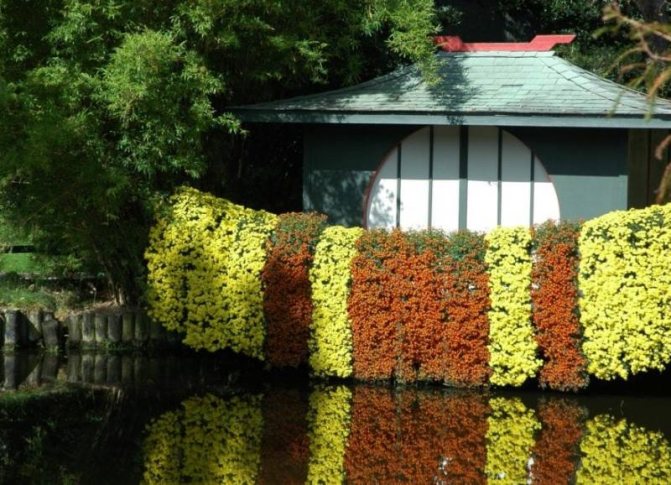

The cascading chrysanthemum (ampelous or Morifolium Cascade) was first bred in Japan. Its flowers were similar to those of a daisy 2.5–4 cm in diameter. Today there are many varieties that make up colorful cascades. All of them are distinguished by strong growth and long, flexible shoots with numerous, flowers of various shapes and colors. Today this way of growing "queens of autumn" is very popular in France, Italy and Spain.In these countries, balconies are decorated with lush ampelous flower arrangements in autumn.


In CCCP, cascading chrysanthemums were grown mainly in botanical gardens. In the 70s of the last century, six varieties of cascade chrysanthemums were tested in the collection of the Main Botanical Garden of the Academy of Sciences of the USSR: Contes de Secourt, Ruissellment d'Or, Cascade d'Orleans, Breeze Japones, Monet, Le Paravan Dore.
Compositions of cascading chrysanthemums are specially formed chrysanthemum bushes, the stems of which do not grow vertically up, but hang down from pots or pots at any angle conceived by the author of this "work". Contrary to the name, if they are not specially formed on a special support, they will grow, as nature should, upwards. Plants can also braid the frames of a wide variety of shapes placed under them. Thus, you can create a variety of curly compositions in the garden, decorated with bright chrysanthemum flowers.
Read also: DIY compound feed for cattle


